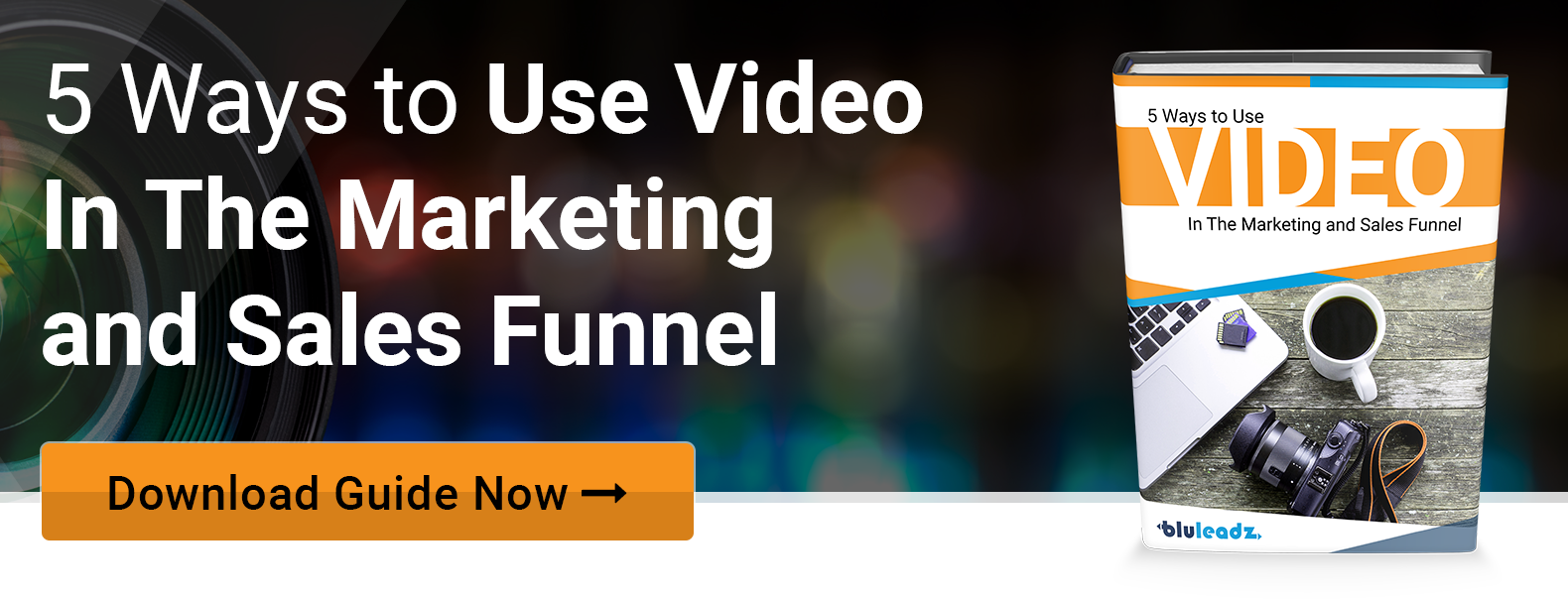Client testimonials are some of the first pieces of content that business leaders consider when updating their websites.
Testimonials establish rapport and buyer trust, and back-up the value of your business's products or services... they're the perfect form of social proof. You know the true value of your service offerings; client testimonials, and particularly video testimonials, are a surefire means of conveying that value and backing it up with evidence.
Producing video testimonials with clients isn't a significant challenge in of itself. Any marketer with a smartphone can shoot a decent testimonial video. The biggest testimonial challenges revolve around capturing honest, almost conversational speech, and compiling footage in a way that amplifies value and convinces viewers to act.
Like many other forms of content, written testimonials can be greatly supported with video—in this case, video adds to the authenticity of a client's written claims, and benefits can be portrayed as more of a success story than a statistical case study. In this blog, we outline 3 easy ways you can create honest and awesome video testimonials for your business.
1.) Have a Conversation Instead of a Scripted Run-Down

Let's deal with the most important item on this list first, as all other items stem from this one onward. Testimonials are supposed to be honest. You shouldn't use testimonial space as a promotion for your business, but rather as a means of showing prospects your solutions work in a variety of use cases, and supporting that claim with real-world evidence and, most importantly, real-world people.
Scripting a testimonial is like scripting a job interview or sales meeting; you wouldn't prepare a verbatim script for an interview or sales call. Not at the C-level, at least. That would ruin your authenticity and your company's image in front of prospective buyers.
"When it comes to establishing trust, it doesn’t matter how compelling your calls-to-action are, how engaging your content is, or how quickly your pages load on mobile screens. If visitors to your site have any doubts about how trustworthy you are, they’ll bounce right out and never come back."
 The people you feature in your video testimonial should be honest in what they're saying about your company, not reading off a prepared script. The easiest way to do this is by creating a comfortable setting and merely conversating with your client. Ask them questions about their experience, what they were trying to achieve and the results they've had by working with your company.
The people you feature in your video testimonial should be honest in what they're saying about your company, not reading off a prepared script. The easiest way to do this is by creating a comfortable setting and merely conversating with your client. Ask them questions about their experience, what they were trying to achieve and the results they've had by working with your company.
For testimonials, we'd even drop using pointer notes or outlines as we recommend for other types of video. Your testimonial videos should be the most honest and believable videos your company produces. At most, provide your client with a short list of sample questions prior to recording, then expand on these questions as the flow permits. In doing so, you could capture absolute gems you hadn't considered earlier.
Your testimonial doesn't have to be perfect, either. You want to show that your clients are real people—real people that once had problems your company has since resolved.
As a final note on this point, the testimonial is your client's story, not yours. Let them tell it in a way that naturally flows from thought to thought. There's a big difference between directing the conversation in a positive way and forcing desired responses.
2.) Balance Time, Storytelling and Benefits

Today, video is probably the most engaging form of visual content a business can use to attract and convert new audiences. Recorded webinars, explainer videos and video testimonials offer great value, but each type of video comes with a unique limitaion: time. Certain videos, like webinars, perform well as long-form, gated content. As for testimonials, it's best to keep messaging concise and pack a big punch in a quick, digestible package.
For the best results, keep client testimonial videos between 1-2 minutes, with 3 minutes being the absolute max.
 Video is very effective at grabbing a website visitor's attention, but that attention doesn't last forever. This, of course, means you will have to format your video testimonials and storytelling elements to fit a tight timeframe.
Video is very effective at grabbing a website visitor's attention, but that attention doesn't last forever. This, of course, means you will have to format your video testimonials and storytelling elements to fit a tight timeframe.
However, don't rush production to keep all testimonial footage under 3 minutes; instead, have a natural conversation with your client that discusses the problems (pain points) they were dealing with, how they came to your business and how your products/services benefitted them. Then, mine through the conversation and compile key phrases and responses that tell the story you're tring to convey.
Here are a few key pointers to keep your video messaging and language clear, and avoid viewer drop-off due to video length:
- Spend the testimonial's opening lines establishing the client and their pain points, and then a majority of the remainder highlighting benefits (exact figures are a big plus, here). Avoid spending too much time on technical use or implementation of your services.
- We really can't highlight going script-free enough. Not only does it increase authenticity, but it also helps you get the most impact out of precious on-screen time.
- To make the most of both your time and your viewer's time, avoid using opening title screens (you know the ones with your logo and contact number that eat up 5-10 seconds of on-screen time) and closing titles. Instead, jump right into the video and equip your video with a CTA to maximize your play time.
3.) Supplement Testimonials With Client Footage and Examples
You've abandoned scripting and have set a goal to keep your testimonial video below 3 minutes... now what? What other steps can you take to get the most out of your timecode? Here's one we see many businesses overlook: they feature a "talking head" throughout their entire video testimonial.
talk·ing head (tôkiNG ˈhed), n.,1. A commentator or reporter on television who addresses the camera and is viewed in close-up.2. Television Slang. a closeup picture of a person who is talking, especially as a participant in a talk show.
Talking heads are boring.
It doesn't take much time for audiences to lose interest in a still shot of a client going through the testimonial motions, even if the testimonial itself is unscripted and to-the-point. In addition to having multiple cameras rolling during your testimonial shoot, we highly suggest including b-roll, product videos or even screen captures in testimonial videos.
Testimonials provide great opportunities as multimedia proofs for your business. Keep viewers interested by featuring your on-screen client's facilities, team, products or even just software screen captures to add further support to the testimonial's messaging.
Shooting an engaging, believable and actionable testimonial video isn't as simple as pointing a camera at a client and asking them "Why is our product/service good?" Telling stories and injecting emotion into your marketing process are some of the greatest strengths of video, and this certainly applies to video testimonials.


Alex Dunn
Alex is a University of South Florida mass communications graduate and Video/Media Specialist at Bluleadz. He is a big movie nerd, loves (possibly dangerous) concerts and enjoys taunting co-workers with a camera. He's probably seen The Royal Tenenbaums 14 times by now.